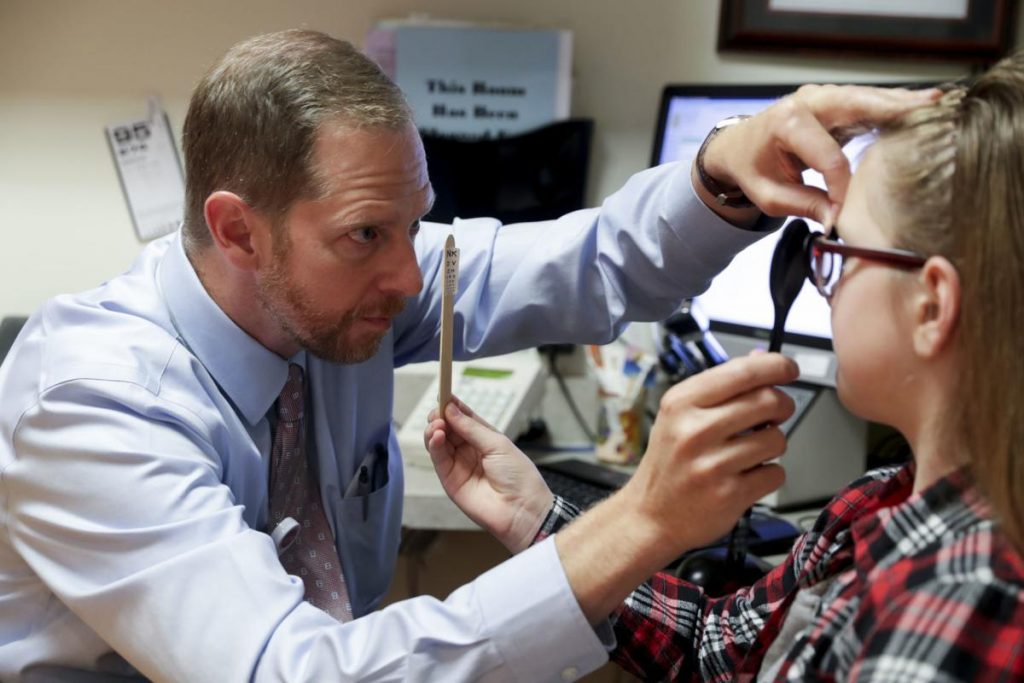
Two decades after University of Wisconsin-Madison’s biologist James Thomson’s unprecedented achievement in lab-grown human embryonic cells, pediatric ophthalmologist David Gamm is fighting blindness through generating ‘spare parts’ of human eyes, on the foundation of Thomson’s leading stem-cell works.
As a pediatric ophthalmologist, Professor Gamm understands how devastating it is to a family when the child is hopelessly losing their sight due to genetic disorders of the eye. Frustrated with the fact that human eye is unable to reproduce photoreceptors, the critical light-sensing cells to one’s vision, and later inspired by Dr. Thomson’s discovery in stem-cell research, Dr. Gamm started an almost-decade-long trial on realizing lab-grown photoreceptors.
“I learned about UW-Madison researcher James Thomson’s pioneering work in stem cells. We figured there must be a way to take these very undifferentiated stem cells, which are kind of little pieces of human-cell clay, and mold them into spare parts for the retina,” said Gamm in an interview with Wisconsin State Journal in November 2018.
Nearly ten years later, Dr. Gamm and his team have successfully developed methods to produce crucial human eye tissues including photoreceptors and even whole human retinas in laboratories. Along with another project focuses on partial thickness cornea transplants, which are used to repair diseased tissue that clouds light entering the eye. Neal Barney, a UW–Madison ophthalmologist, is developing a high-tech, synthetic carrier to deliver a thin cadaver-derived corneal tissue during surgery. “These ultra-thin tissues can fold up like wet tissue paper during surgery,” Murphy says. “The goal is to develop and manufacture a membrane to transport this tissue to the patient and hold it in place until it grafts, and then dissolve over time.” These discoveries bring lights to human vision loss.
Yet having practical sources of new human photoreceptors is only the first half of the mission. A much more challenging part of the battle awaits, for it is still uncertain whether the human eye can well adapt regenerative cells. “If the downstream retinal circuit is a mess, putting fresh, new cells in there isn’t going to be of much help. In other words, a new light bulb is of no use if the socket wires are cut,” Gamm explains. “Fortunately, the socket wires appear to be in reasonable working order in many patients with photoreceptor degenerations.”
Many critical questions still need to be answered, and Dr. Gamm plans to start a clinical trial with UW Hospital in 2021. Gamm and his team are continuing to work towards the cure for eye blinding disorders with stem-cell studies.
We have to accept that these are hard problems, and we are going to get more things wrong than right in the beginning. But I am confident that, with diligence and collaboration, we’ll get there.
Sources
Galassi, G. (2018, September 20). Clinical prospects for stem cells begin to emerge. University of Wisconsin-Madison News, pp.1.
Tenenbaum, D. (2018, November 29). Biomanufacturing projects stepping out at UW-Madison. University of Wisconsin-Madison News, pp.4.
Wahlberg, D. (2018, November 4). UW researcher using stem cells to create ‘spare part’ for blindness. Wisconsin State Journal, pp.6.